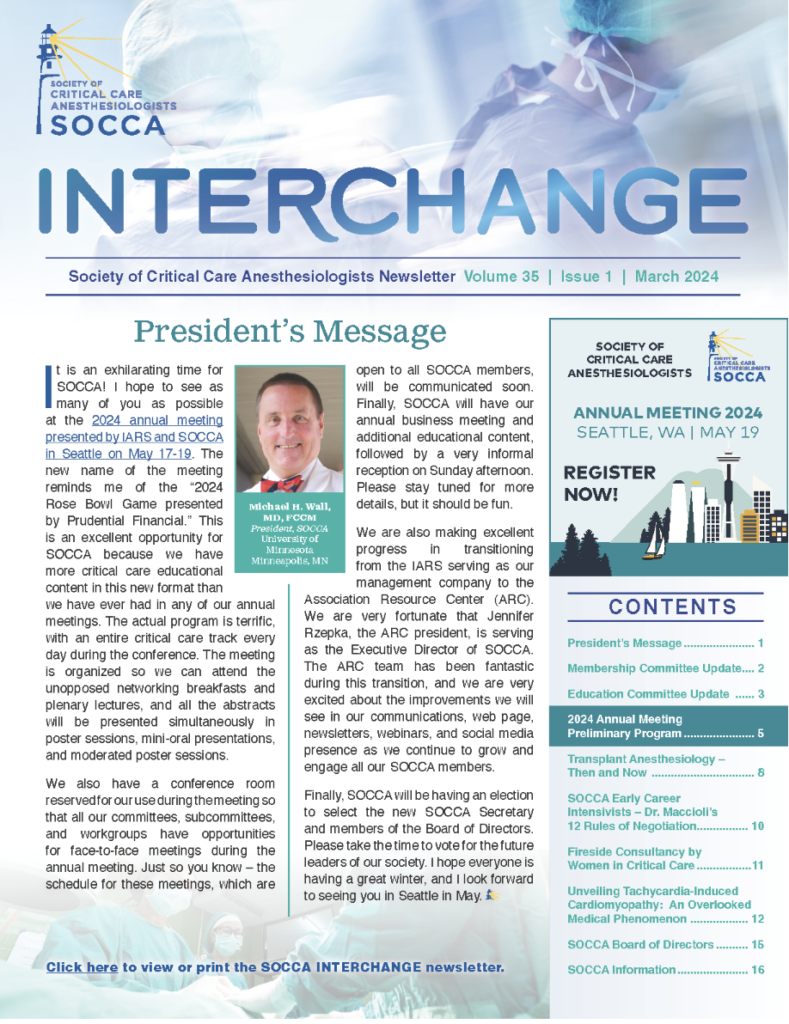Hematologic Challenges in the Critically Ill
I was pleased to review Hematologic Challenges in the Critically Ill (1st edition, October 30, 2018, Springer Publishing, ISBN 13: 978-3319935713, 437 pages, $159.99) which was edited by Dr. Howard L. Corwin and SOCCA past president Dr. Aryeh Shander. The books was written by dozens of contributors from across the globe. In their comprehensive volume, Drs. Shander and Corwin describe the pathophysiology of hematologic disorders and explore the latest evidence-based assessment and treatment of anemia and coagulopathy in the critically ill. The scope of this text makes it a valuable resource for essentially any physician or advanced practice provider who practices in a medical or surgical ICU. Management of perioperative patients is especially well covered in this text, also making it relevant to the intraoperative management of critically ill patients.
The editors have organized the book into three sections, each of which uses abundant figures, tables, and color illustrations to emphasize key points and simplify complex concepts. The first section focuses on general issues in the ICU including anemia, coagulation abnormalities, and hematologic testing. For example, in the hematologic testing chapter, the strengths, pitfalls, and modern application of both classic and newly developed lab tests are well described. Additionally, there is extensive detail about the utilization and interpretation of novel tests such as VerifyNow test of ADP inhibition and thromboelastographic assays.
The second section, which is the most directly clinically focused of the three parts, breaks down hematologic challenges into nine specific clinical settings and patient populations. For example, chapters are dedicated to disease process such as sepsis, liver dysfunction, and cardiovascular disease, as well as clinical situations such as obstetric hemorrhage, trauma, solid organ transplant, and extracorporeal membrane oxygenation. Each chapter delves into the unique hematologic pathophysiology of the clinical scenario, providing a comprehensive review of the disease process, and offering evidence-based strategies for the nuanced and often controversial patient management.
The final section addresses both general and special interest topics such as anti-coagulation and reversal agents, alternative treatments to transfusion, and evidence-based blood management. Chapters are devoted to issues such as the development, rationale, and clinical use of hemoglobin-based oxygen carriers (HBOCs), patient risks of blood transfusion including transmission of pathogens and transfusion reactions and immunomodulation (TRIM), and minimization of iatrogenic blood loss.
The editors and authors have effectively presented a comprehensive, evidence-based overview of the assessment and management of hematologic pathophysiology in critically ill patients, with exceptional utilization articles published in the last 5 years. While the content is inherently dense, well-organized chapters with frequent subheadings and a detailed index make it easy to find and distill information. The abundant utilization of recent literature makes this an excellent reference for clinical practice. This is certainly a text which I will maintain in my personal library, and reference when posed with a hematologic challenge.




































